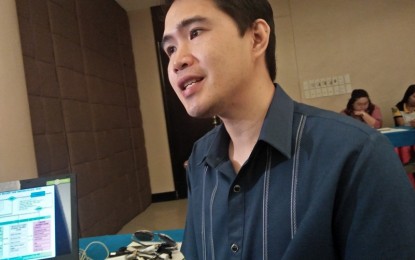
REHAB GRADUATES. John Richard Lapascua, senior health program officer of the Western Visayas Center for Health Development, said 5,670 drug surrenderers have officially graduated from the community-based rehabilitation program. Lapascua said on Saturday (March 5, 2022) they are gradually being integrated into society to increase their self-confidence and to remove the stigma of being former drug users. (PNA file photo)
ILOILO CITY – An initial 5,670 former drug users in Western Visayas have officially graduated from the community-based rehabilitation program (CBRP).
John Richard Lapascua, senior health program officer of the Western Visayas Center for Health Development (WV CHD), said on Saturday the data came from barangays that have applied for drug-cleared status as of Feb. 10, 2022.
“They have received benefits from their local government units, others are enrolled with TESDA (Technical Education and Skills Development Authority) and there are others who graduated from alternative learning (system),” he said in an interview.
The CBRP is a drug rehabilitation program that is focused on drug users and managed by local government units (LGUs).
Before the surrenderers are admitted to the CBRP, they need to undergo the Alcohol Smoking Substance Involvement Screening Test (ASSIST) to determine the kind of substance they used and the severity of their risk.
Those considered as low risk will be referred to the barangay while those assessed as moderate can either be in barangay or health centers.
High risks are referred to doctors for assessment of whether their dependence is mild, moderate, or severe.
Mild or moderate cases are rehabilitated in health centers but severe cases are brought to the treatment and rehabilitation center (TRC).
The majority of those who graduated had mild dependence, Lapascua said.
The intervention for low-risk cases takes a minimum of four weeks with a random drug test in between; and for mild to moderate cases, eight to 12 weeks.
Those in the TRC will consist of six months in-patient and 18 months aftercare service.
While under rehabilitation, they engage in spiritual activities, psycho-education on ill-effects of drug use, and individual and family counseling sessions and environmental awareness.
Upon completion, they are referred to their respective municipal anti-drug abuse councils for an aftercare program, depending on their need.
“We would like to integrate them gradually into the society so the stigma will be removed, their self-confidence to mingle with other people will increase and be productive members of the society,” Lapascua added.
He also said they are pushing for all barangays to already apply for a drug-cleared status so they would have a complete picture of the real number of persons who used drugs in Western Visayas.
As of February 10, about 3, 529 of the 4,051 barangays in the region have been cleared of illegal drugs. (PNA)
